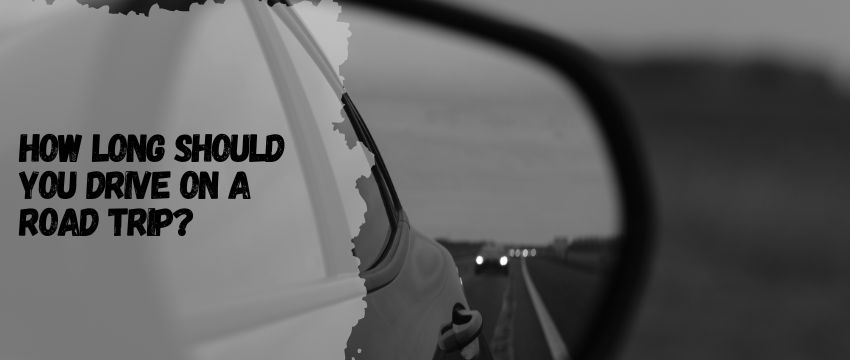What’s up, road warriors? Planning a cross-country adventure but wondering how many hours you can clock behind the wheel without turning into a zombie? Let’s break it down—no robotic jargon, just straight talk about keeping you safe, healthy, and your car happy.
Your Road Trip Limits: It’s Not One-Size-Fits-All
Your Car’s Stamina Matters
Your ride isn’t a superhero—it needs breathers too. Pushing it nonstop for 10+ hours without checks? That’s asking for a meltdown. Fluids heat up, tires wear down, and engines get grumpy. Stick to 8–9 hours max daily, and give it a 15-minute pit stop every 2–3 hours to cool off. Pro tip: Oil changes and tire rotations before the trip? Legit lifesavers.
Your Brain Has a Battery
Ever zone out halfway through Nebraska? That’s fatigue kicking in. Most drivers start losing focus after 2 hours. If you’re yawning or missing exits, pull over ASAP. A 20-minute power nap or swapping drivers can save the day. Remember, no caffeine can outsmart exhaustion.

Weather and Traffic Are Wild Cards
Driving through a blizzard or bumper-to-bumper traffic? Your “safe” drive time shrinks fast. Rain cuts visibility, and stop-and-go traffic fries your patience. Add 50% more buffer time to your plans if conditions suck. Better late than never, right?
Staying Safe: Listen to Your Body (and Your Car)
Spot the Red Flags
Is your neck stiff? Are your legs cramping? That’s your body screaming for a break. Ignoring it risks accidents or health nightmares like blood clots. If your car’s dashboard lights up like a Christmas tree, don’t play hero—find a mechanic.
Smart Breaks = Happy Trips
Plan stops every 2 hours even if you feel fine. Stretch, hydrate, and snack. Use apps like Roadtrippers to find quirky roadside attractions—who doesn’t want a selfie with the world’s largest rubber band ball?
Health Hacks for Long Drives
Beat the Blood Clot Blues
Sitting for 4+ hours hikes your clot risk. Compression socks aren’t just for grandpas—they boost circulation. Every stop, do lunges or calf raises. Hydrate, but don’t binge—nobody wants bathroom detours every 30 minutes.

Snack Like a Pro
Skip the gas station nachos. Pack nuts, fruit, and dark chocolate for steady energy. A cooler with water and electrolytes keeps you sharp. Pro tip: A messy car sucks, so stash trash bags under the seat.
When to Ditch Your Car
Your Car’s Cry for Help
Squeaky brakes? Overheating engine? If your car’s acting up pre-trip, forget it—rent instead. A breakdown in the middle of nowhere? No thanks. Check maintenance records: If it’s been 5+ years without major service, maybe stay local.
Route Roulette
Steep mountain passes or dirt roads can murder an old sedan. Match your ride to the terrain. No AWD? Maybe skip that Rocky Mountain “shortcut.”
Road Trip Specs at a Glance
| Feature | Details |
|---|---|
| Max Daily Drive Time | 8–9 hours with breaks every 2–3 hours |
| Rest Stop Frequency | Every 2 hours for stretching, hydration, and sanity checks |
| Blood Clot Prevention | Move every 1–2 hours; wear compression socks |
| Car Check-Up | Oil, tires, and fluids inspected before hitting 500+ mile trips |
| Fatigue Signs | Yawning, drifting lanes, irritability—pull over ASAP! |
Wrapping It Up
Road trips are epic, but pushing limits ruins the vibe. Balance drive time with rest, tune into your body and car, and pack patience. Adventure awaits—just don’t let fatigue or a busted radiator steal the show.
How Often Should You Rest on a Long Road Trip?
Aim for a break every 2 hours. Stretch, grab a snack, or just walk for 5–10 minutes. If you’re feeling under the weather, add extra stops. Driving more than 8 hours a day? Split it with a co-pilot. Your back (and passengers) will thank you.
What’s the Safest Way to Brake?
Ease into stops—don’t slam the pedal unless it’s an emergency. On steep descents, downshift to avoid overheating brakes. Keep a 4-second gap from the car ahead. If ABS kicks in, maintain pressure; pumping defeats the purpose.
How Often to Stop to Avoid Blood Clots?
Move every 1–2 hours. Calf raises, ankle rotations, or a quick walk work. Compression socks reduce swelling, and hydration keeps blood flowing. Long trips? Consider aspirin if your doc approves.
When Should You Not Take Your Car?
Skip the trip if your check engine light’s on, tires are balder than a bowling ball, or brakes sound like a horror movie. Past-due maintenance or recalls? Get it fixed first.
Is a 4-Hour Drive Bad for Your Car?
Nah, it’s totally fine—if your car’s maintained. Modern engines handle highways like champs. Just check fluids and tire pressure beforehand. Stop once halfway to stretch and let the engine breathe. Easy peasy!
Hit the road, but keep it chill—your future self will high-five you. 😎
Our team is creating outdoor-gear relevant articles with passion. If our articles can help you to find the correct solutions for your questions, we will be happy about that. In the content creation process, we usually collect accurate and useful information online or offline to compile our content in an organized way. Consequently, we can guarantee that you can discover some expected answers to your questions. We appreciate your time on our site.







